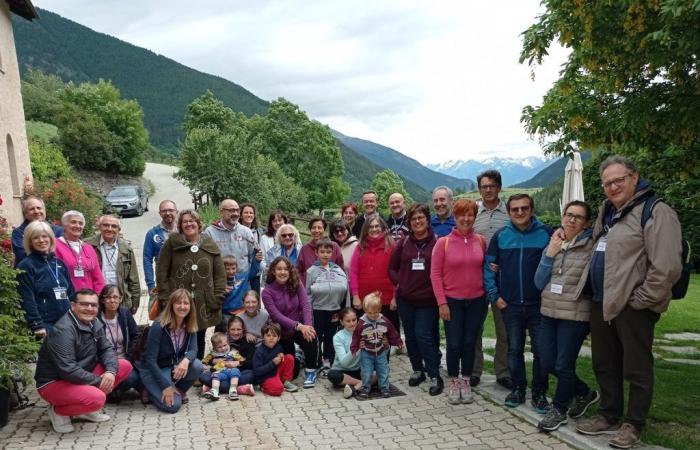The Chateau Verdun holiday home in Saint Oyen, in the Aosta Valley, hosted a training day for baptismal catechists on Sunday 23 June. Strengthened by previous experiences, the diocesan teams of Aosta, Cuneo-Fossano, Turin and Susa have relaunched the proposal this year once again in the splendid Aosta Valley setting. The day was enlivened by a mild and sunny climate that accompanied the proposal made of prayer, listening, workshops and sharing.
The video contributions of the three speakers were much appreciated: Don Michele Roselli (Episcopal Vicar for Formation of the diocese of Turin); Don Marco Gallo (priest and teacher of Sacramentaria of the diocese of Saluzzo); Simona Flauret (religious teacher from Savigliano). The related workshops proved to be equally welcome, the result of a laborious common preparation between the diocesan teams, which led to the identification of three bold steps, the first to be taken to reach the goal.
Starting from the invitation of the Piedmontese bishops «Jesus welcomes the children and asks that they be brought to him» (Cep, For a Mother Church, 19), the day was structured around the great theme of “Children at Mass”: is it possible? As? What path for families?”.
Faith, like life, is learned “mirror-wise”, by imitating believing men and women before us. Their gestures, their words, their way of relating constitute the starting line of education in faith (and life). In this sense, the Christian community has great educational potential: it can arouse the taste for believing, or, on the contrary, dry it up. It is precisely starting from this premise that we understand how important are all those moments that help us savor the beauty of Christian life: intergenerational contexts (i.e. situations/occasions in which there are generations of different ages at the same time), celebratory moments at home, a pleasant and shared ritual experience, attentive to the languages of the little ones (singing, music, gestures, objects, etc.), the mass.
In the contemporary scenario, where fewer and fewer families attend mass, is it possible to hypothesize the participation of children? How? Through what languages?
In the apostolic letter I longed for itPope Francis emphasizes how the liturgy, to be alive, must be a place in which to experience the encounter with the Lord Jesus. In fact, the only way to heal a distant, doubtful heart is to discover that we ourselves are desired, awaited by God. We must therefore ask ourselves: “To what extent are our communities an instrument of this desire for God?” What emerged forcefully from the work of the various participating groups is that to help families and children feel within this “desire for God” it is necessary to work seriously on the “before” and “after” celebration: taking care of the welcoming rites, the initiatory paths towards the celebration, the moments of prayer in the home. But, at the same time, becoming aware that for a child it is necessary to be within a community context, in which to live the ritual experience with other peers who, like them, walk and grow in the following of Jesus.
The Aosta Valley meeting proved to be a pleasant and content-rich experience at the same time, an eagerly awaited moment which is gradually turning into a fixed annual event on which to draw to regenerate and regenerate faith.



